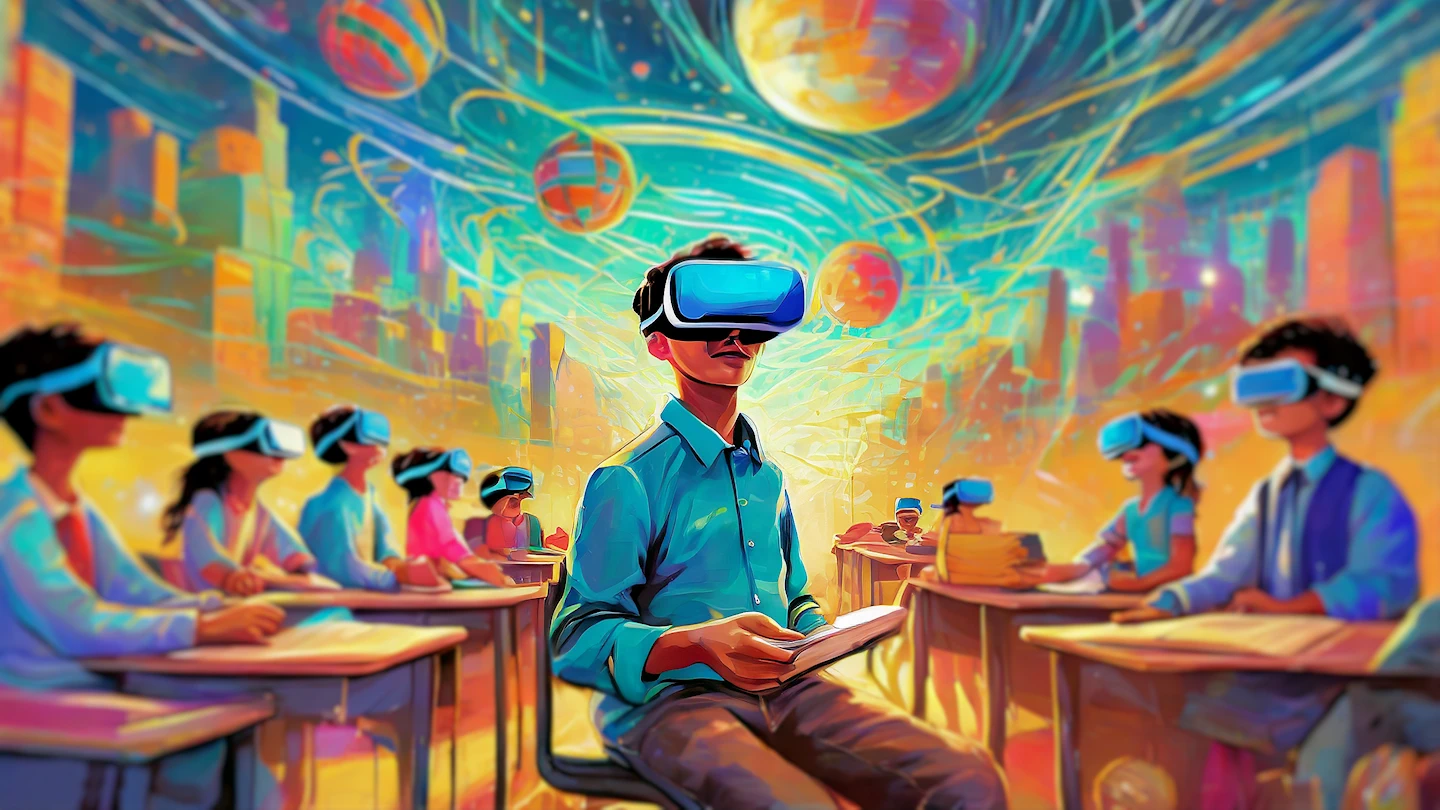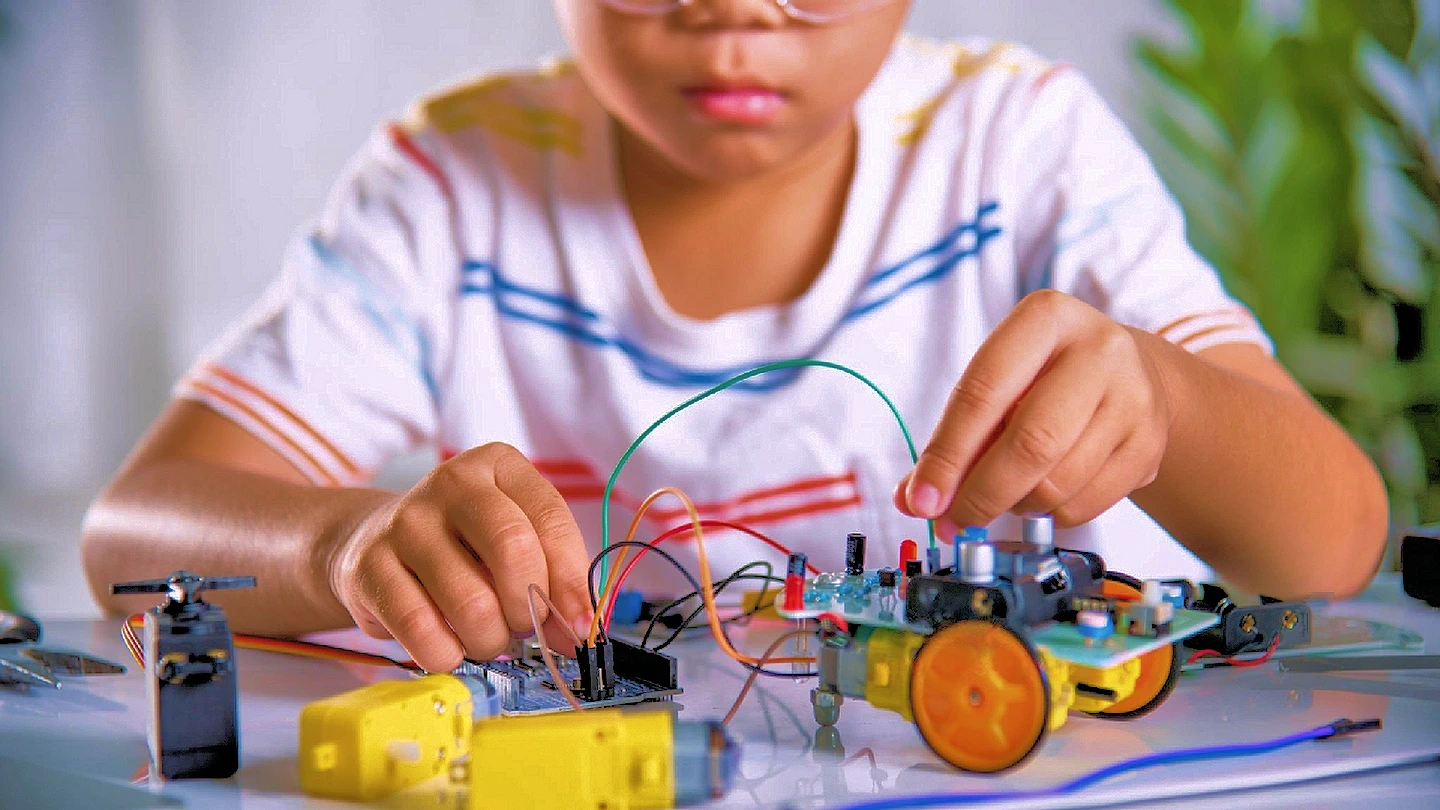With technological advancements rapidly reshaping the educational landscape, the classrooms of tomorrow are not confined to four walls. Instead, they are emerging as hybrid, dynamic spaces that harness the potential of Virtual Reality (VR).
Let’s dive deep into how Hybrid Classroom can make learning more engaging and interactive than ever!
What is Hybrid Classroom?
At its core, Hybrid Classroom combines the traditional physical classroom environment with the immersive experience of virtual reality. Think of it as having a physical space to interact, but also the ability to put on a VR headset and be transported to ancient Rome, the depths of the ocean, or even another galaxy!
Elevating engagement levels
Beyond the textbook: VR games 3D AL Hub VR, three-dimensional, lifelike experiences that no textbook can replicate. Instead of merely reading about the Amazon rainforest, students can virtually walk through it, feeling the sensation of being there.
Active participation: Passive learning often leads to disengagement. VR promotes active participation, where students can interact with their surroundings, ensuring they are always at the center of their learning journey.
Facilitating interactive learning
Collaborative exploration: With Hybrid Classroom VR, students can explore virtual worlds together. Imagine a group project where students visit a virtual art museum worldwide and collaborate in real-time.
Hands-on virtual labs: Subjects that demand hands-on activities, like science and engineering, can immensely benefit. Students can perform experiments, manipulate objects, and see reactions in a controlled, virtual environment.
Customizable experiences for every learner
Tailored learning paths: Recognizing that every student learns differently, VR enables educators to customize experiences. For instance, while one student might benefit from a slow, detailed concept exploration, another might prefer a quicker, overview-style approach.
Incorporating different learning styles: VR caters to all, whether a student is a visual, auditory, or kinesthetic learner. This ensures that learning is not just effective but also enjoyable.
Overcoming geographical boundaries
Worldwide access: With Hybrid Classroom, physical location ceases to be a barrier. Students from around the globe can be in the same virtual space, learning together and breaking down geographical and cultural barriers.
Field trips redefined: Remember the excitement of field trips? Students can visit historic landmarks, explore outer space, or dive deep into ocean trenches without leaving the classroom. The world (and beyond) is their oyster!
Aiding students with special needs
Inclusive learning environments: Hybrid Classroom VR can be tailored to cater to students with special needs. With adjustable settings, students can have experiences designed specifically for their comfort and understanding.
Enhanced focus & reduced distractions: The immersive nature of VR can help students who struggle with attention by placing them in a distraction-free environment, thereby aiding concentration and comprehension.
Empowering Teachers
Dynamic Lesson Planning: Educators can use VR to bring their lesson plans to life, offering experiences that can cement understanding far better than traditional methods.
Instant Feedback and Assessment: With VR’s interactive features, teachers can obtain real-time feedback on students’ performance and understanding, allowing for immediate adjustments and personalized guidance.
The Potential Challenges
While the prospects of Hybrid Classroom VR are exciting, it’s essential to acknowledge the challenges:
- Technical Glitches: Like any technology, VR can sometimes face technical issues, interrupting the learning experience.
- Cost Implications: Setting up VR-ready classrooms requires an initial investment, which might not be feasible for all institutions.
- Adaptability Curve: Both educators and students will need time to adapt to this novel way of learning, requiring training and orientation sessions.
Looking Towards the Future: The Promise of Hybrid Classroom VR
As we embrace the 21st century, the convergence of education and technology becomes more intertwined. Hybrid Classroom VR is a testament to this evolution, offering opportunities for students and educators.
Lifelong learners: VR’s immersive and interactive nature ignites curiosity, encouraging students to become lifelong learners, always eager to explore and understand the world around them.
Skill development: Beyond academic knowledge, VR helps cultivate critical 21st-century skills, such as collaboration, problem-solving, and technological literacy, preparing students for the future workspace.
Global citizens: VR fosters global community and understanding by connecting students worldwide, nurturing the next generation of empathetic global citizens.
Conclusion: The New Dawn of Education
The transformative power of Hybrid Classroom VR is undeniable. As we venture into uncharted territories of educational innovation, the union of traditional teaching methods and immersive VR experiences promises a brighter, more interactive, and holistic future for learning. Embracing these changes will redefine classrooms and reshape how we perceive education in the broader sense.
Frequently Asked Questions
How does Hybrid Classroom VR promote global unity?
VR fosters worldwide understanding and community by enabling students worldwide to learn together.
Can Hybrid Classroom VR cater to students with special needs?
Absolutely! VR settings can be adjusted to provide tailored experiences for students with specific requirements, ensuring inclusive learning.
What is Hybrid Classroom VR?
It’s a blend of the traditional classroom environment and the immersive experience of Virtual Reality, giving students the best of both worlds.
How does VR enhance engagement?
By offering lifelike experiences beyond textbooks and promoting active participation.
Can students collaborate in a VR environment?
Absolutely! Students can explore virtual worlds together, working on group projects and collaborating in real time.
Is Hybrid Classroom VR suitable for hands-on subjects like science?
Yes, students can perform experiments, manipulate objects, and observe reactions in a controlled, virtual setting.
Can the VR learning experience be customized for individual students?
VR allows educators to tailor experiences based on students’ unique learning styles and pace.
How does VR cater to different learning styles?
Whether a student learns best through visual, auditory, or kinesthetic means, VR can be adapted to suit their preferences, ensuring effective and enjoyable learning.



